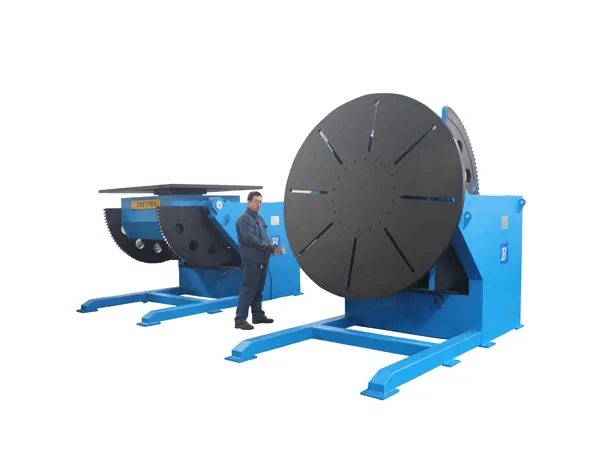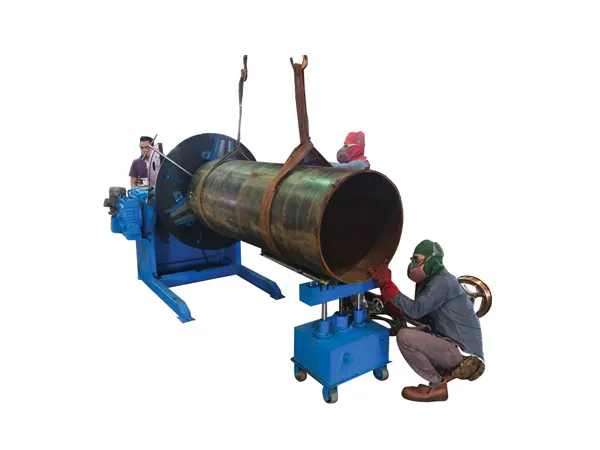Posicionadores de soldadura are invaluable tools for significantly improving welding efficiency. They do this by allowing the workpiece to be rotated, tilted, and held in optimal positions, reducing the need for manual manipulation, awkward welding postures, and frequent repositioning. Here’s a breakdown of how to maximize their efficiency.
How to Improve Welding Efficiency of Welding Positioner

1. Proper Selection of the Welding Positioner:
Match to Workpiece: Choose a positioner that can safely and effectively handle the size, peso, and shape of your typical workpieces. Consider load capacity (vertical and horizontal), velocidad de rotación, and tilt capabilities.
Application-Specific Types:
Tilting Positioners: Best for complex angles and intricate applications.
Headstock & Tailstock Positioners: Ideal for long and heavy workpieces like pipes or beams, ensuring balanced support.
Turntable Positioners: Great for smaller, circular components, offering 360-degree rotation.
Ferris Wheel Positioners: Excellent for robotic welding, allowing loading/unloading on one side while welding occurs on the other, maximizing arc-on time.
Control Features: Look for adjustable rotation and tilting speeds, programmable settings, and remote control capabilities for enhanced precision and ease of use.
2. Optimize Setup and Operation:
Secure Workpiece: Always ensure the workpiece is firmly and stably attached to the positioner. Consider the center of gravity to maintain balance, especially for large or irregularly shaped parts. Use appropriate clamps and fixtures.
Ergonomics: Position the workpiece at an optimal height and angle that allows the welder to maintain a comfortable, natural posture. This reduces physical strain, fatiga, and the risk of musculoskeletal injuries, leading to more consistent and higher-quality welds over longer periods.
Downhand Welding: The primary goal of a positioner is to bring the weld joint into the “dayf” o “departamento” posición (1F or 2F). These positions allow for higher deposition rates, better penetration, and easier control of the weld pool, leading to faster and higher-quality welds.
Minimize Repositioning: Plan the welding sequence to minimize the number of times the workpiece needs to be repositioned. A good positioner allows a single setup for multiple passes or joints.
Streamline Multi-Pass Welding: For thick materials requiring multiple passes, a positioner ensures smooth transitions between passes, reducing delays and improving consistency.
3. Integration and Automation:
Robotic Integration: If applicable, integrate the welding positioner with robotic welding systems. This allows for fully automated processes, significantly increasing travel speed, consistencia, and overall throughput, especially for repetitive tasks and large-scale production.
Fixture Compatibility: Ensure that fixtures used to secure the workpiece are compatible with the positioner and provide adequate stability. Custom fixtures can be designed to maximize efficiency for specific parts.
Consistent Welding Parameters: Standardize welding parameters (velocidad, heat settings, rotation times) for similar jobs to ensure uniform results and reduce errors.

4. Maintenance and Monitoring:
Mantenimiento regular: Implement a routine maintenance schedule. Inspect motors, engranajes, abrazadera, and electrical connections regularly. Lubricate moving parts to reduce wear and tear and extend the lifespan of the equipment.
…
For more detailed information on how to improve welding efficiency of welding positioner, haga clic para visitar: https://www.bota-weld.com/en/a/news/improvement-of-welding-efficiency-of-welding-positioner.html


